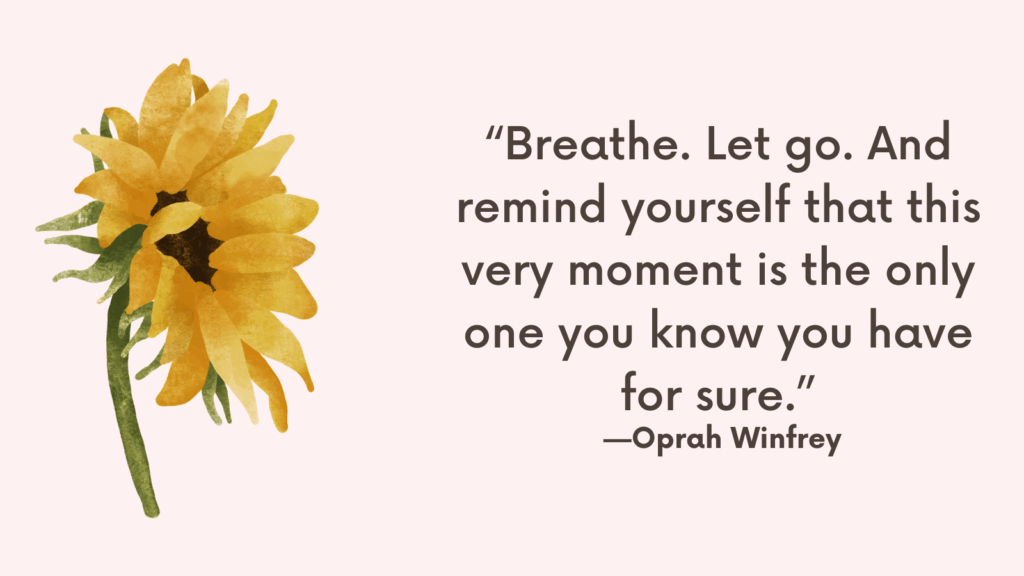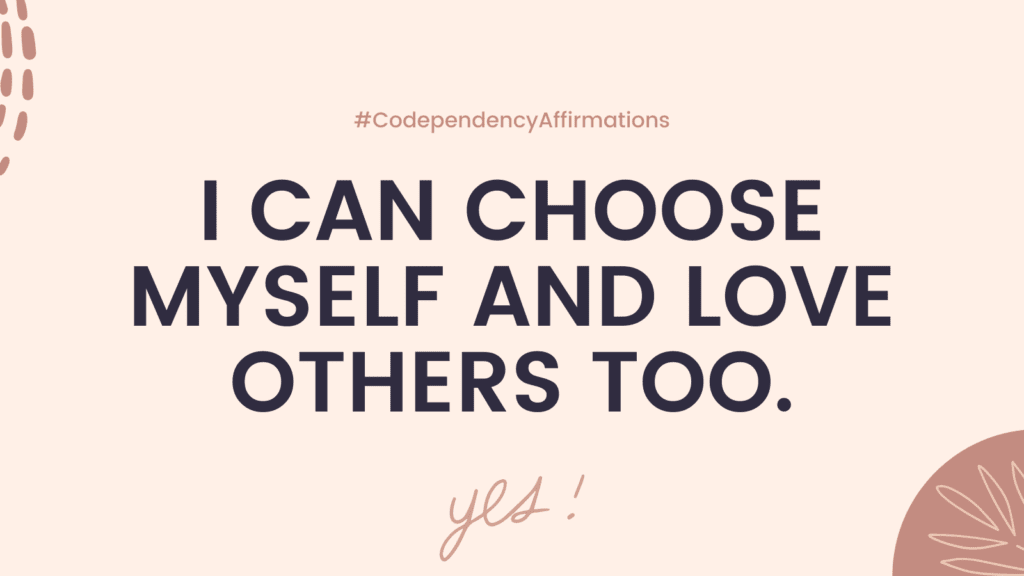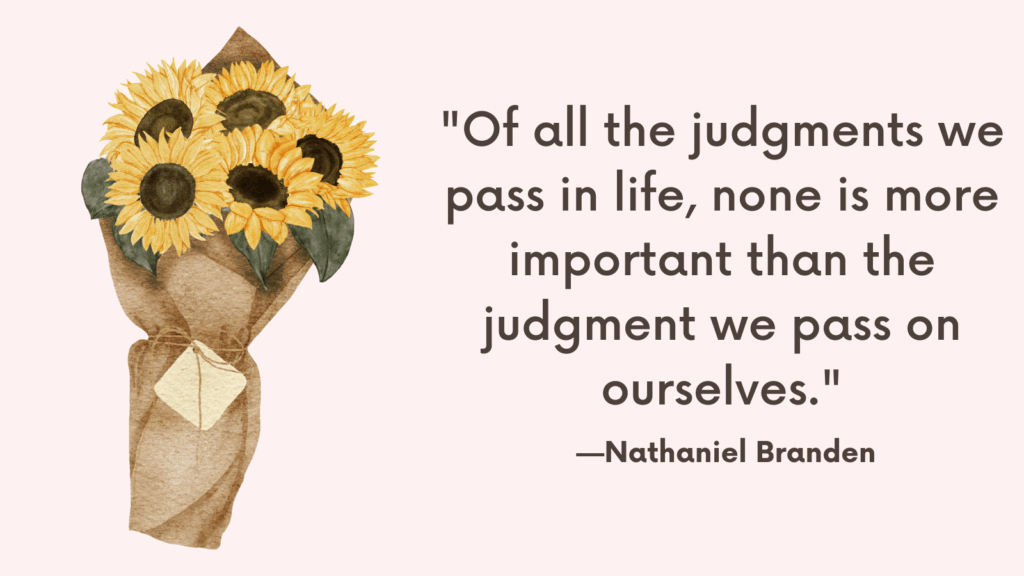Today you’re going to learn all about self-abandonment and how to get back in touch with yourself.
What Is Self-Abandonment?
Self-abandonment can be a strange concept.
After all, how can you abandon yourself when you are always with yourself?
Self-abandonment is when you reject, ignore, or suppress parts of yourself in real-time.
That is you abandon yourself when you value the needs and opinions of others more than you value your own.
Self-abandoners are often people pleasers.
Related: 30-Day Self-Love Challenge That Will Radically Change Your Life
Causes of Self-Abandonment
Self-abandonment mainly stems from the belief that the self-abandoner’s needs and desires cannot be met or should not be met.
This belief often begins in childhood.
Primary caretakers who don’t meet their child’s physical and/or emotional needs, the child grow up believing that their needs are not important.
They continue to repeat such patterns of behavior because it’s familiar and it’s all they know. That is, taking care of their own needs and allowing themselves to receive those needs from other people in their lives feels foreign.
As they continue to detach from their needs and desires, over time, they might lose touch with themselves, and the ability to identify their own needs.
Related: Healing From Childhood Emotional Neglect In 6 Steps (+FREE Worksheets PDF)
Are You a Self-Abandoner?
Does any of the following describe you?
- You have a hard time trusting yourself.
- You hide parts of yourself (feelings, beliefs, and ideas) in order to fit in or please others.
- You diminish or discount your feelings because you think they don’t really matter or they’re too much.
- You value other people’s needs and desires over your own.
- You find it difficult to encourage and comfort yourself when you need it.
- You find yourself in codependent relationships where you take the role of the caretaker and enabler of the other person.
- You often do things that go against your values to avoid conflict or to fit in.
- You have unrealistically high expectations of yourself
- You judge yourself harshly when you don’t meet your painfully high standards.
- You often second-guess yourself and let others decide for you.
If so, you might be a self-abandoner.
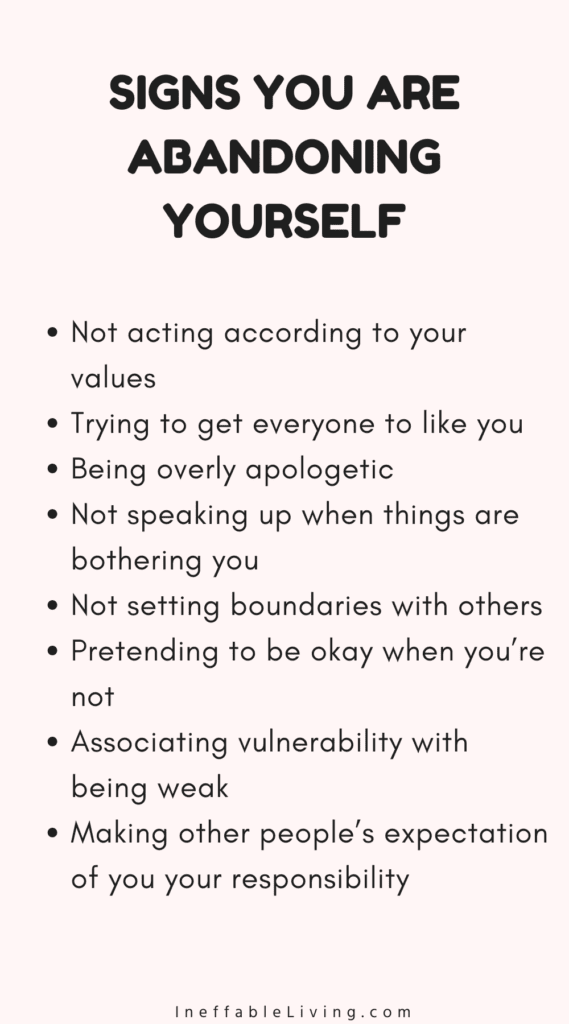
How to Heal Self-Abandonment In 6 Steps?
#1. Challenge Your Limiting Beliefs
Self-abandonment is often fueled by the belief that one’s needs could not and/or should not be met.
The first step in healing self-abandonment is to challenge those assumptions.
When you find yourself choosing not to meet your own needs or putting other people’s needs before your own, stop for a few moments and ask yourself the following questions:
1. “Why am I making this decision?”
You’re in abandonment mode if your answer is guilt, shame, fear, or self-loathing.
2. “If I had no one to impress or account to and no one was watching, would I still choose not to do …?”
This removes peer pressure and other people’s influence from your decision-making and helps you identify what you actually want.
#2. Connect With Yourself
The most important relationship in your life is the relationship you have with yourself.
Therefore, you need to be able to trust and rely on yourself.
This could be done by allowing yourself to freely express yourself without judgment.
This will help you internalize the belief that although you’re not without flaws, you are still worthy.
Journaling prompts can be a great way to start connecting with yourself.
The following are some examples:
1. If I could talk to my younger self, I would say …
2. When times get tough I want to remember that …
3. If I didn’t have any fear I would …
4. Right now my greatest challenge is …
5. I feel most energized when…
6. Things I would like to say no to are…
7. Things I would like to say yes to are…
8. What are my strengths?
9. What is my proudest accomplishment?
10. What new activities am I interested in or willing to try?
11. If I had only one wish, what would it be?
12. What do I like about my job?
13. What am I worried about?
14. What am I ashamed of?
15. Where do I feel safest?

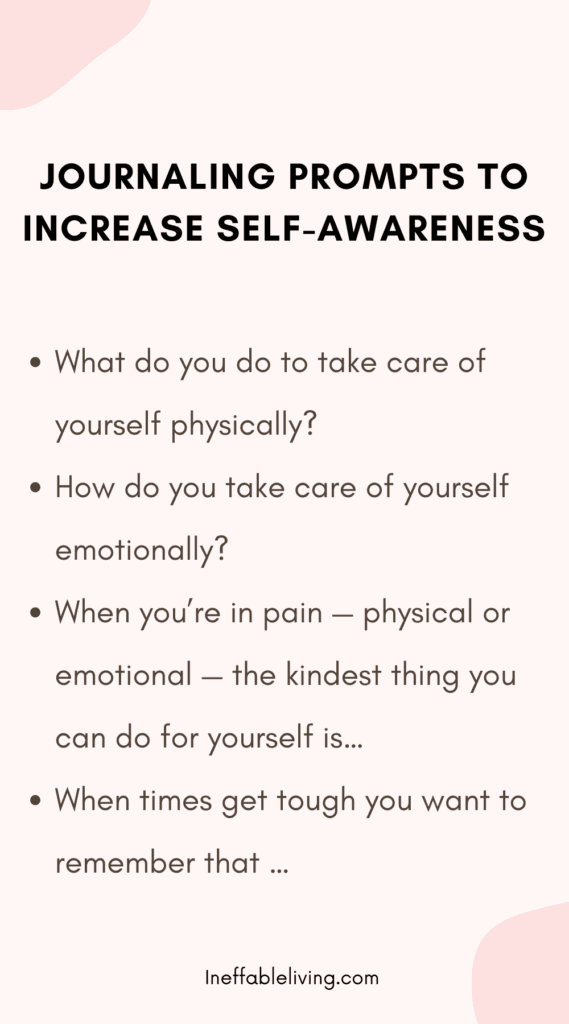
#3. Allow Yourself To Have Feelings And Needs
Everyone has feelings and needs that deserve to be honored.
Even if you never felt safe enough as a child to express our feelings and needs, you can now be a safe person for your own feelings and needs.
To begin, practice identifying your feelings throughout the day, and then based on those feelings, identify your needs.
To do that, pause for a few moment throughout the day and ask yourself:
· What am I feeling right now in my body?
· What emotion am I experiencing?
· What do I need right now?
The goal here is to allow difficult feelings and stay present with them, rather than denying them or rejecting them.
Mindfulness can be a helpful too here. It’s especially made easy to practice with apps such as Calm, Headspace, and Insight Timer.
Dowload FREE List of Emotions
#4. Allow yourself to be uniquely you
Consider the parts of yourself that you’ve been hiding out of fear of disapproval or judgment.
What interests, hobbies, creative pursuits, passions, hairstyles, clothes, etc. have you been denying yourself?
Commit to rediscover what you actually want and what matters to you most and then act on it.
#5. Practice Self-Compassion
You, as much as everyone else, deserve compassion.
This is especially difficult to remember when we’re suffering.
When we need compassion most, we tend to mercilessly judge and criticize ourselves, believing that it will help us do better next time.
That is rarely the case. In fact, judging and criticizing ourselves only serves to lower our self-esteem, causing us more failure and more suffering.
Self-compassion researcher Kristen Neff, Ph.D. suggests instead that we extend compassion to ourselves when confronted with personal failings.
This could be done by:
(1) Noticing our internal experience when we’re struggling (bodily sensations, feelings, thoughts) without judgment.
(2) Recognizing that everyone suffers in some way. This truth helps us feel less alone in our suffering.
(3) Providing ourselves with the same kindness we would provide others.

#6. Advocate For Yourself
If you’re a chronic self-abandoner, chances are you’re not used to standing up for yourself.
Asserting yourself, setting boundaries, and daring to disagree with others can be scary because we fear that doing so will make others abandon us.
But by not standing up for yourself, you’re abandoning yourself and allowing others to walk all over you, which is clearly not worth it and is by no means a foundation of a healthy relationship with anyone.
Learn how to start setting healthy emotional boundaries here
Conclusion
Healing self-abandonment is a process.
In the same way that we don’t become self-abandoners from one decision, so we can’t get back in touch with ourselves overnight.
However, every choice you make to honor yourself and your needs counts.
Make a decision to choose yourself every day.
References
- Are You a Chronic Self-Abandoner? | NAMI: National Alliance on Mental Illness
- Why We Abandon Ourselves and How to Stop (psychcentral.com)
- Suffering and the Role of Abandonment of Self | Request PDF (researchgate.net)
- Detecting Self-Neglect: A Comparative Study of Indicators and Risk Factors in a Spanish Population – PMC (nih.gov)
